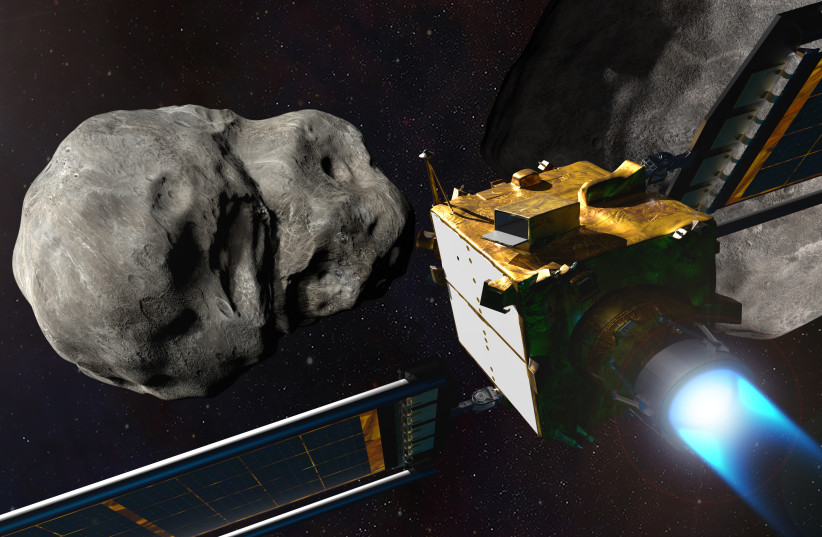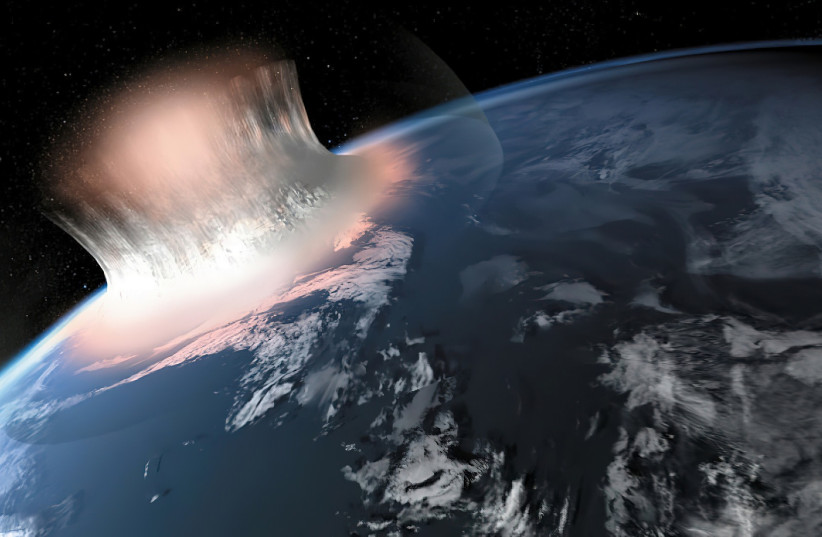A first-of-its-kind planetary defense mission was launched from Vandenberg Space Force Base in California early Wednesday morning to see if humanity can protect itself against an asteroid impact.
The Double Asteroid Redirection Test (DART) Mission is the result of collaboration between NASA and Johns Hopkins University’s Applied Physics Laboratory (APL).
The spacecraft was launched onboard a SpaceX Falcon 9 rocket and then safely detached to begin its mission to intentionally crash into an asteroid.
The target of this 1.8 x 1.9 x 2.6-meter spacecraft is the 160 meter-long Dimorphos, a Washington Monument-sized asteroid in the Didymos system, which is not currently on a collision course with Earth.
In a little less than a year, this 550-kg. spacecraft will collide with Dimorphos at a speed of around 6.6 kilometers per second, and will hopefully alter the asteroid’s trajectory ever so slightly using the never-before-tested “kinetic impactor” technique.

In layman’s terms, it means punching an asteroid with a rocket with enough speed to change its direction by a fraction of a percent – a process that NASA has likened to a “pillow fight in microgravity.”
According to the Davidson Institute of Science Education, the educational arm of the Weizmann Institute of Science, DART is designed to intercept a hostile target like missile defense systems such as Israel’s Iron Dome. But instead of stopping it in its tracks like an enemy missile, it will hopefully steer it away from Earth.
The tiny deflection would be enough to be observed and measured by astronomers, especially since Dimorphos is expected to be just 11 million kilometers away from Earth at the estimated time of impact.
One of the few people observing the Didymos system both before and during the scheduled impact is Dr. David Polishook, an astronomer from Israel’s Weizmann Institute and a member of the DART investigation team. This is because the collision will happen during the night in Israel, making it more visible compared to many other observatories.
Others will have to rely on special cameras onboard DART that will record the impact and send images of it back to Earth.
Why is this so important?
An asteroid impacting Earth is one of the worst natural disasters that could occur. The danger of even small ones is something well-known to experts, with space agencies around the world monitoring for potential catastrophic impacts, as well as researching potential means of stopping them.

The last known significant asteroid impact was on February 15, 2013, when an asteroid exploded in the air above Chelyabinsk, Russia. While it didn’t cause any fatalities, the shock wave from the explosion shattered windows in six different Russian cities and caused 1,500 people to seek medical attention.
That asteroid was just 17 meters in diameter, but many others, like Dimorphos or its 780 meter-sized neighbor Didymos, are much larger. Any asteroid with a diameter of at least 140 meters could be catastrophic if it impacted the planet.
According to research from the Davidson Institute, the impact of an asteroid the size of Dimorphos would release an amount of energy at least a thousand times greater than the energy released by the first atomic bomb. Something even larger – over 300 meters wide like the asteroid Apophis – could destroy an entire continent.

And an asteroid over a kilometer in size could trigger worldwide cataclysms.
Humanity has no means of defense against asteroids. That is why missions like DART are so important.
Other methods of planetary defense have been proposed as well. These include other means of deflection or even disruption, which means destroying the asteroid, such as with explosives. But these methods are less ideal.
“There are multiple ways to deflect an asteroid from its orbit such as kinetic impact, light and gravity,” Polishook explained. “So far, kinetic impact is the most straightforward. Future experiments will probably try other methods.”
The astronomer also explained why deflection is a better alternative than disruption.
“Deflecting asteroids admittedly requires more time compared to destroying it, but I think that it’s hard to realize how hard it is to blow up a rock 100 meters or more in size into dust,” he explained. “It is more plausible that the asteroid will break up into multiple components, some of them large enough to be dangerous in their own right. It should be our last solution.”
By NASA’s current predictions, the Earth is at no risk of an asteroid impact within the century. However, this only refers to asteroids coming from the “front,” meaning heading toward the Sun. It does not refer to asteroids coming from the “back,” meaning from the direction of the Sun toward Earth.
NASA has no current way to accurately monitor these asteroids, which often only get discovered after the fact.
This means that an asteroid could strike the Earth with little to no warning – something that has already happened.
“The asteroid that impacted Chelyabinsk in 2013 arrived from the direction of the Sun during daylight, thus it was impossible to observe it in the weeks before impact,” Polishook said. “However, with enough time – meaning some years – we will eventually be able to see all near-Earth asteroids at different angles. So a major part of an effective planetary defense program should include astronomic surveys to endlessly look for unknown asteroids and measure their orbits.”
To match with these threats, though, DART will need to catch up. Especially since this test is just a scaled-down version of the real thing.
“In six months, an asteroid will only move around 11 kilometers away from its current course after being deflected by the DART craft – not enough to escape the Earth, which has a diameter of 13,000 kilometers,” said Polishook.
“In the event of a real imminent asteroid impact, DART will have to be larger and much faster in order to change the orbit of an asteroid in a short enough time.”
